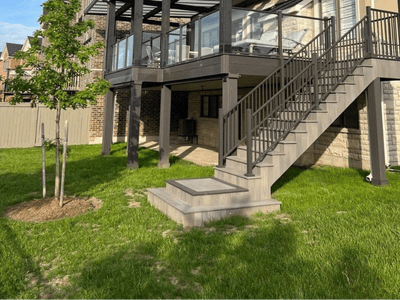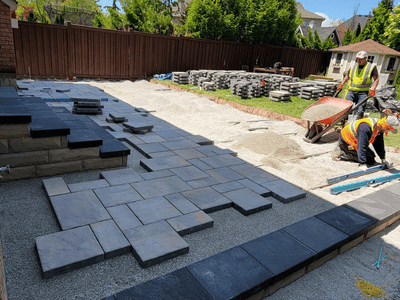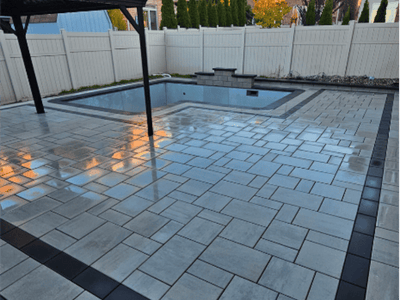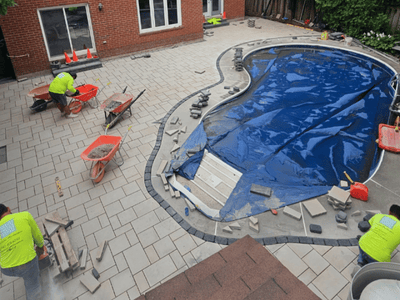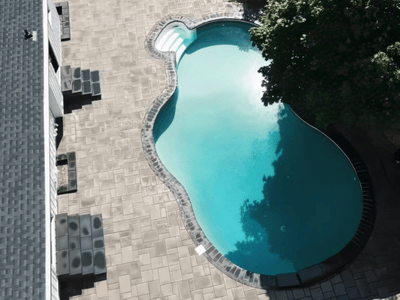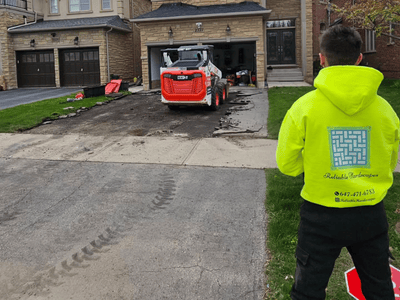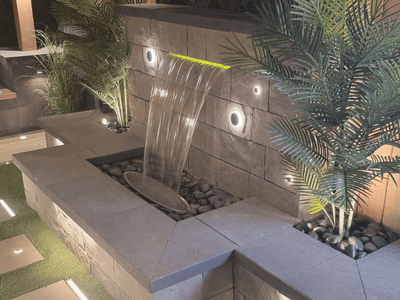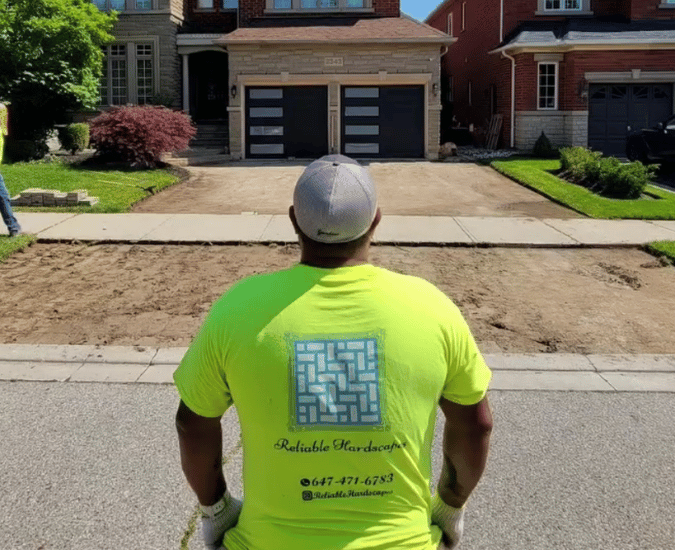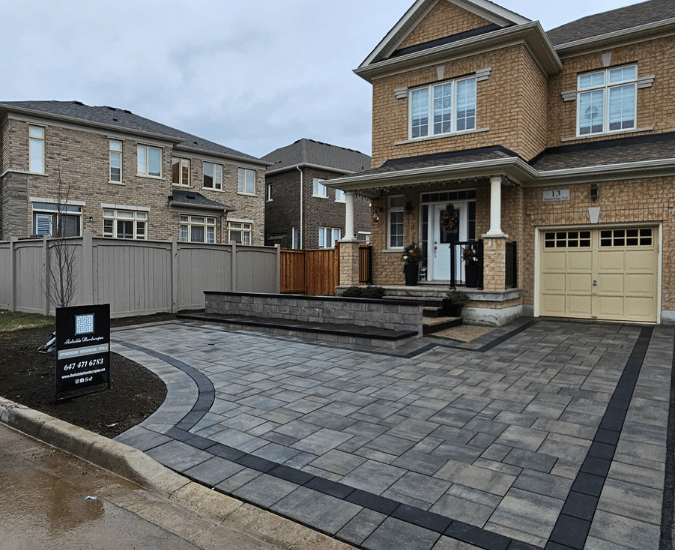Mastering the Art of Hardscaping in Mississauga: From Driveways to Dream Backyards
Hardscaping is more than just the installation of pathways, patios, or retaining walls—it’s about creating long-lasting, beautiful outdoor spaces that add functionality and enhance the overall aesthetic of your property. Whether you’re upgrading your driveway, creating a peaceful backyard retreat, or installing outdoor features like kitchens and fire pits, hardscaping plays a crucial role in transforming a house into a home.
For homeowners in Mississauga, the unique climate and soil conditions demand expert knowledge and skill. Here, we dive into the essential components of hardscaping, exploring everything from driveway interlocking to custom outdoor spaces, and how you can master the art of hardscaping with the right design, materials, and execution.
1. Driveway Interlocking: Elevate Your Curb Appeal
Your driveway is one of the first things people notice when they approach your home, and an interlocking driveway is a perfect way to make a great first impression. Unlike traditional concrete or asphalt driveways, interlocking pavers offer unmatched versatility, durability, and aesthetic appeal.
Why Choose Interlocking Driveways?
Interlocking driveways are highly customizable, offering a range of design options in terms of color, pattern, and texture. Whether you prefer a contemporary, sleek look or a more rustic, natural feel, interlocking pavers can accommodate all styles. They are also known for their durability, with pavers that resist cracking, fading, and erosion.
Durability: Resistant to wear and tear, interlocking pavers can handle the weight of vehicles without cracking.
Maintenance: Damaged pavers can easily be replaced without the need to resurface the entire driveway.
Aesthetic Flexibility: Choose from a wide range of colors, shapes, and patterns to complement your home’s design.
Drainage: Interlocking pavers allow for water to flow through the gaps, preventing pooling and reducing runoff, making them eco-friendly.
2. Deck Construction: Transform Your Outdoor Living Space
A deck is an essential component of any backyard. It serves as a platform for relaxation, entertainment, and enjoying the outdoors. Whether you want a large, multi-level deck or a small, intimate space for your morning coffee, the design and construction of your deck must be carefully planned to match your lifestyle.
Materials Matter: Wood vs. Composite
When it comes to deck construction, choosing the right material is crucial. Traditional wood decks are timeless and offer a natural look but require regular maintenance, such as staining and sealing. On the other hand, composite decking is low-maintenance, weather-resistant, and comes in a variety of colors and textures.
Key Considerations for Deck Construction:
Functionality: Consider how you plan to use the deck—whether it’s for dining, entertaining, or relaxing.
Size and Layout: The size of your backyard will dictate the size of the deck. You should also think about how the deck will flow with the rest of your landscaping.
Materials: Wood offers a classic appeal, but composite decks provide less maintenance and long-lasting durability.
3. Patio Interlocking: The Foundation of Your Outdoor Oasis
A patio is the perfect place to entertain, dine, or simply relax with a good book. Interlocking pavers are a popular choice for patio construction due to their versatility and durability. You can design your patio to match the rest of your backyard, choosing colors, patterns, and textures that complement your home’s exterior.
Why Go with Interlocking Pavers for Your Patio?
Interlocking pavers offer many benefits, including ease of repair, low maintenance, and a range of design options. Whether you prefer a traditional or modern look, interlocking pavers allow for an easy customization process.
Design Variety: From classic cobblestone to sleek modern patterns, interlocking pavers allow you to design a patio that reflects your style.
Durability: Pavers are resistant to cracking and will last for many years, even under harsh weather conditions.
Eco-Friendly: With built-in drainage properties, interlocking pavers reduce runoff, making them a sustainable choice.
4. Walkway and Pathway Construction: Define Your Landscape
Walkways and pathways are more than just functional—they guide people through your garden and can enhance the beauty of your landscape. Whether you’re connecting different areas of your yard or creating a visual pathway to the front door, the right design will create a welcoming atmosphere.
Material Choices for Walkways and Pathways:
When choosing materials for your walkway or pathway, consider factors like foot traffic, durability, and aesthetics. Options range from natural stone and flagstone to interlocking pavers and concrete, each offering distinct benefits.
Guiding Foot Traffic: A well-placed pathway can direct visitors to your front door, leading them through a lush garden or a beautifully designed backyard.
Adding Visual Interest: Pathways can serve as design elements that add depth and texture to your outdoor space.
5. Retaining Wall Installation: Functional and Beautiful Solutions
A retaining wall serves a practical purpose: it helps prevent soil erosion and creates level spaces for landscaping. However, a well-designed retaining wall can also be a standout feature in your backyard, offering both functionality and beauty.
Choosing Materials for Retaining Walls:
Materials like natural stone, brick, or interlocking blocks can be used to create retaining walls. Each material offers its own unique appearance and durability, so it’s important to choose one that complements your landscape and suits your needs.
Erosion Control: Prevents soil erosion by stabilizing slopes and creating terraced areas.
Aesthetic Appeal: A well-designed retaining wall can be a beautiful focal point in your garden or backyard.
Increased Usable Space: Retaining walls can help level sloped areas, creating more space for gardens, patios, or lawns.
6. Outdoor Kitchen Construction: Cook and Entertain Outdoors
For homeowners who love to entertain, an outdoor kitchen is an absolute must-have. Imagine cooking a delicious meal while enjoying the fresh air and the company of friends and family. An outdoor kitchen allows you to take full advantage of your backyard, combining functionality with luxury.
Planning Your Outdoor Kitchen:
When designing your outdoor kitchen, think about the type of cooking you enjoy. Do you prefer grilling, or would you like to add a pizza oven, a smoker, or even a wine cooler? Your design should reflect your cooking style and the amount of space you have.
Grill or Oven: The centerpiece of most outdoor kitchens.
Counter Space: Essential for prepping and serving food.
Storage: Built-in cabinets or drawers to store cooking tools and utensils.
Lighting and Seating: For late-night dinners or social gatherings.
7. Fire Pit and Fireplace Installation: Warmth and Ambiance
A fire pit or fireplace adds warmth and ambiance to your backyard, making it the perfect place to relax during cooler evenings. Whether you prefer a cozy fire pit or a more formal fireplace, these features will enhance the beauty of your outdoor living space.
Fire Pit vs. Fireplace:
Fire pits are typically circular or square, offering a more casual and open design. They are great for creating a central gathering spot for friends and family. Fireplaces, on the other hand, provide a more controlled, classic look and often come with a chimney for ventilation.
Fire Pit: An open, informal design perfect for gatherings with friends and family.
Fireplace: Provides a more formal and sophisticated atmosphere with a chimney for ventilation.



